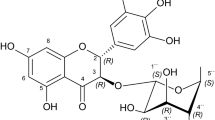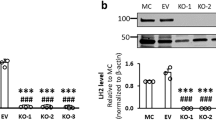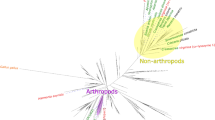Abstract
PREVIOUS investigators have shown that human plasma cholinesterase is strongly inhibited by both lysergic acid diethylamide (LSD) and its 2-bromo derivative (BOL). The cholinesterases of other species were less sensitive to the effects of both these substances1–3. Recent reports described certain newer choline esters, namely, imidazoleacrylylcholine4 5 (murexine), imidazoleacetylcholine6 and imidazolepropionylcholine (dihydromurexine) which are hydrolysed most readily by human plasma cholinesterase7–10. These observations have led us to evaluate the possible relationship between cholinesterase inhibition by lysergic acid diethylamide and BOL and cholinesterase hydrolysis of dihydromurexine. Dihydromurexine was chosen as the model substrate because it is the most active of the three esters.
This is a preview of subscription content, access via your institution
Access options
Subscribe to this journal
Receive 51 print issues and online access
$199.00 per year
only $3.90 per issue
Buy this article
- Purchase on SpringerLink
- Instant access to full article PDF
Prices may be subject to local taxes which are calculated during checkout
Similar content being viewed by others
References
Thompson, R. H. S., Tickner, A., and Webster, G. R., Brit. J. Pharmacol., 10, 61 (1955).
Zehnder, V. K., and Cerletti, A., Helv. Physiol. Pharmacol. Acta, 14, 264 (1956).
Fried, G. H., and Antopol, W., J. App. Physiol., 11, 25 (1957).
Erspamer, V., and Benati, O., Science, 117, 161 (1953).
Keyl, M. J., Michaelson, I. A., and Whittaker, V. P., J. Physiol., 139, 434 (1957).
Grunert, G., and Kewitz, H., Naturwiss., 42, 628 (1955).
Foldes, F. F., Erdös, E. G., Baart, N., and Shanor, S. P., Proc. Soc. Exp. Biol. N.Y., 94, 500 (1957).
Grelis, M. E., and Tabachnick, I. I. A., Brit. J. Pharmacol., 12, 320 (1957).
Keyl, M. J., and Whittaker, V. P., Brit. J. Pharmacol., 13, 103 (1958).
Tabachnick, I. I. A., Roth, F. E., Mershon, J. S., Rubin, A. A., Eckhardt, E. T., and Govier, W. M., J. Pharmacol., 123, 98 (1958).
Hestrin, S., J. Biol. Chem., 180, 249 (1949).
Author information
Authors and Affiliations
Rights and permissions
About this article
Cite this article
TABACHNICK, I., GRELIS, M. Inhibition of Cholinesterase Hydrolysis of Dihydromurexine by Lysergic Acid Diethylamide and its 2-Bromo Derivative: a Selective Relationship. Nature 182, 935 (1958). https://doi.org/10.1038/182935a0
Issue date:
DOI: https://doi.org/10.1038/182935a0



